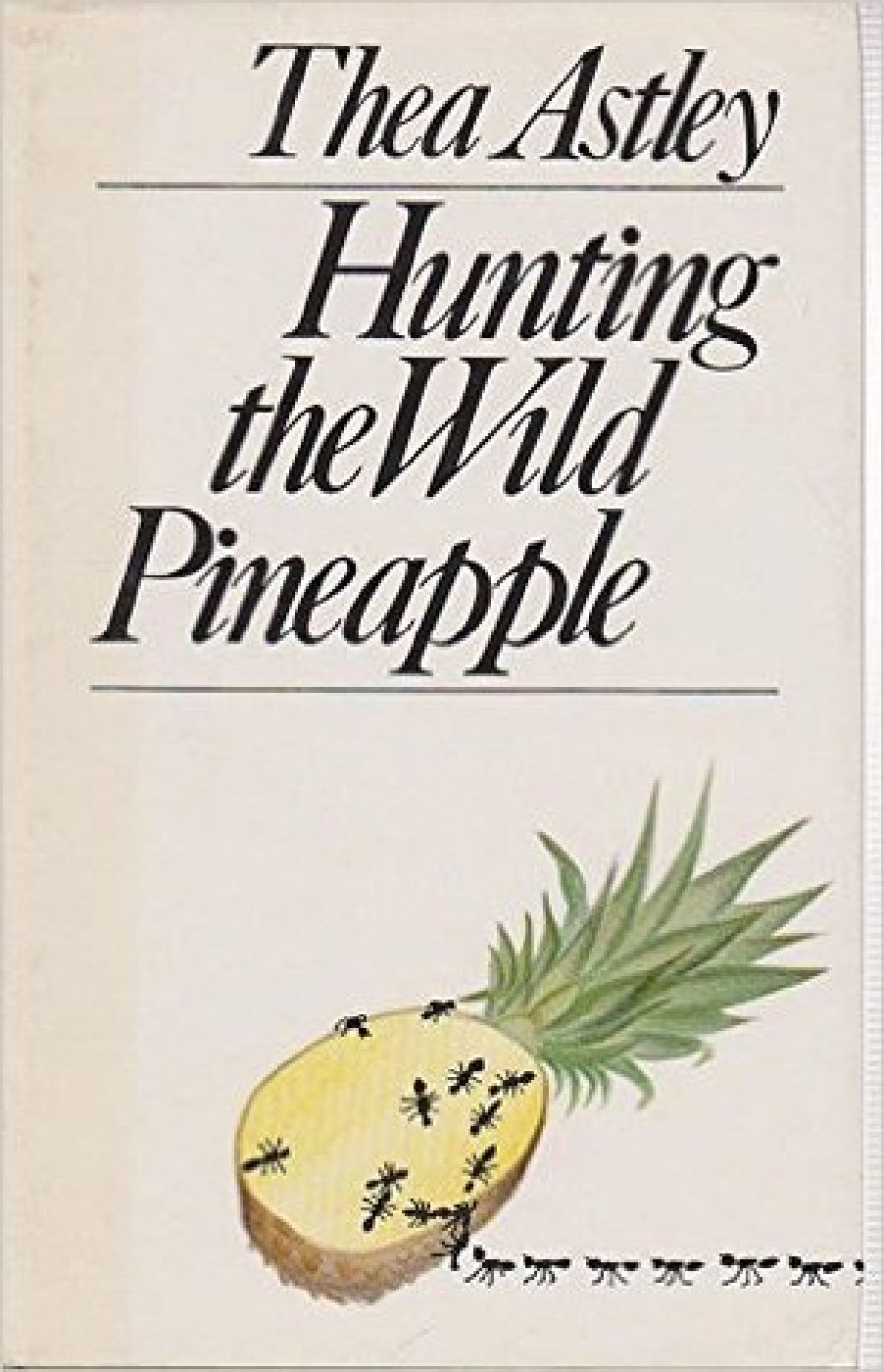
- Free Article: No
- Contents Category: Fiction
- Review Article: Yes
- Online Only: No
- Custom Highlight Text:
There nine stories in this volume are rich in people, satire, compassion, and humour. And set like ambushes, unexpected and surprising, are several cameos. It is a captivating, ensnaring book, but to call it a book of short stories would be so inadequate as to be misleading. There is an uncommon coherence, slender but powerful enough to raise it above that easy classification.
- Book 1 Title: Hunting the Wild Pineapple
- Book 1 Biblio: Penguin, $3.95 pb, 173 pp
There is an entertaining presentation of people living, some of them temporarily, in tropical north Queensland. The area too, of which there is so little literature, has been effectively captured in impressive brevity.
The stories are told through Keith Leverson, described as the ‘narrator’. It is inaccurate. An ordinary narrator would have provided a strong common clement, but Leverson is far too unobtrusive for that. When you read or see Under Milkwood you know there is a narrator at work whatever the stage lighting. But often you are not aware of Leverson at all.
In the same way you are seldom aware of the writing. It is writing that generally does not draw attention to itself. It draws you into the environment with the people. Thea Astley has an awesome ability to tell you of people’s features and traits, the chill and heat of desire, fear, folly, and the senses by a succession of simple hints and subtle signs. Rather as country people can tell time precisely by reading a hundred hints of light and shadow.
In the title story, for example, you hardly become acquainted with Mr Passmore before you realise you already understand his wife Tubs. And with most of the characters you will meet, Willy Fourcorners, The Fixer, Sadie Klein, Miss Geary, it is the same.
Leverson says right at the beginning that he is a ‘people freak’. He is blessed with the ability to achieve adventure on a bus ride and he most enjoys meeting strangers – ‘more magic in strangers’.
In every chapter a tiny cameo is set, sometimes more than one. No more than a few lines to surprise you, jolt your memory and yield immediate understanding. If, when you read ‘North: Some Compass Readings: Eden’ you are puzzled by the Good News cameo, see if you can find the Good News show in your television program and watch one. That scene in the first story is the essential ‘Good News man’ (though his name is not mentioned) and hundreds of episodes of him are caught in thirteen lines.
Is this fiction? The place names Mango, Tobaccotown, Reeftown are a light camouflage, but the places are magnificently real. The people too, ranging in age from baby (‘Wait a While’) to old Miss Geary are all drawn with microsurgical accuracy. And here and there you feel the sting m the tail: in the story of the dazzling Bram and again when Father Rasini boyishly embraces a rainwater communion after an encounter with Canon Morrow.
The writing is often tantalising, calling on the reader’s own imagination, rather like the work of some contemporary Asian writers. It is occasionally illusory and frequently magical.
This book, now republished as a paperback, raises Thea Astley’s reputation even higher than it was. It is a measure not only of her knowledge, but of her curiosity and it demonstrates the magnitude of her skill.


Comments powered by CComment